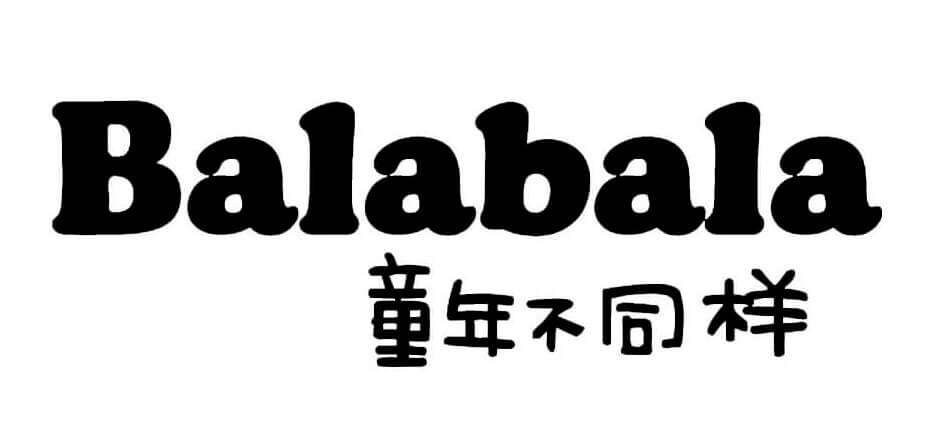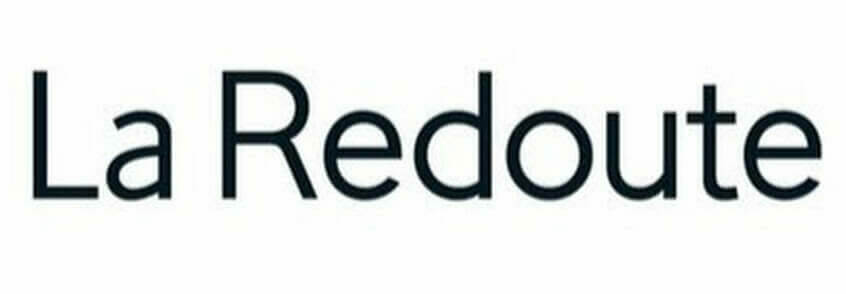Designed by Peclers Paris, the theme of the new season of Maison&Objet, TECH EDEN: A New Natural Awakening, explores the profound evolution of the relationship between science and nature, as the basis for a sustainable and desirable future. In INSPIRE ME!, the show’s inspirational forum, Peclers Paris has scripted the possible hospitality applications of this science/nature reconciliation. Meet some of the forum’s contributors…
Could you introduce GENCORK and [SPECTROOM] in a few words: where do you come from, and what are your plans for a desirable future?
Le Brimet, Generative Computational Designer and Creative Director [ SPECTROOM ] and GENCORK :
GENCORK is a design brand specializing in generative cork solutions by SOFALCA that explores the symbiosis between sustainable material, generative computation, and advanced manufacturing processes. It merges creativity, technology, sustainability, and human emotions in a seamless dialogue. In our creative process, 100% natural and ecologically expanded black cork is transformed through computational algorithms based on generative design, inspired by biology, mathematics, and geometry. The creation of the cork panels explores industrial digital manufacturing processes, opening a new spectrum of possibilities and generating new formal aesthetics. This digital creative system not only optimizes the thermal and acoustic properties of cork but also adds aesthetic value, providing multiple emotions and sensations to those who contemplate it. The brand is creatively directed by [ SPECTROOM ], an architectural office, design studio, and creative and research lab focused on generative design, material research, and digital fabrication. I lead this multidisciplinary practice that develops projects in several fields: product design, art installation, interior design, architecture, and digital research. The studio is committed to employing new technologies in the production of forms and spaces, exploring strategic combinations between new sustainable materials, generative processes (Computational design), artificial intelligence, and digital fabrication technologies (3D printing, CNC, laser-cutting, and robotics).
The brand, based in Abrantes, Portugal, is a living system in constant mutation with a local structure and a global strategic vision. Its genesis results from the perfect combination of an industry with over 50 years of experience led by Paulo Estrada and a new generation of curious and innovative creative minds. Together we design a future centered around Naturology – the connection between nature and technology. As Frank Lloyd Wright said: “Study nature, love nature, stay close to nature. It will never fail you.” We are learning from nature, appreciating its genesis and evolutionary processes. The knowledge gained becomes the creative roots, allowing the technology tree to bear the fruits of innovation and creativity.
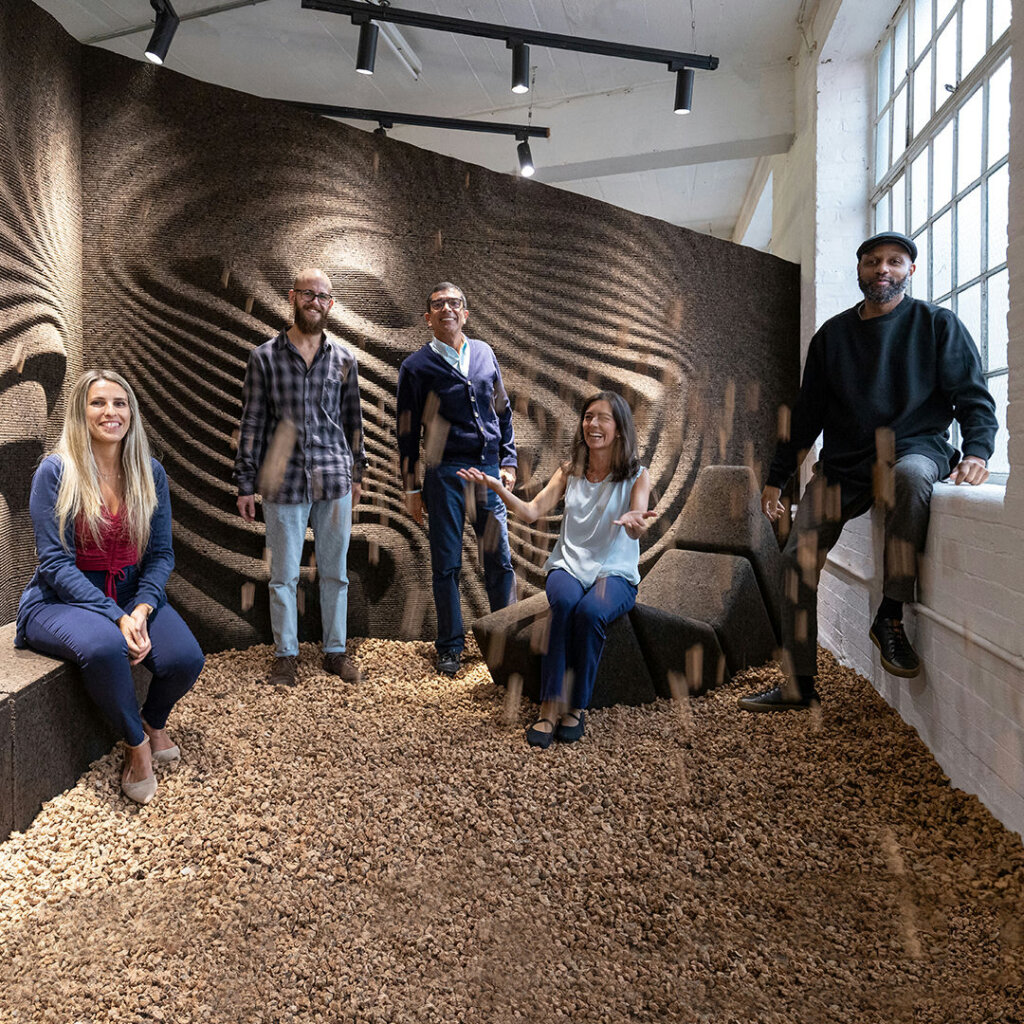
Tell us more about The C(AI)rcle, the installation presented in the TECH EDEN Forum ?
TECH EDEN, at Maison et Objet, is the perfect garden that hosts a hybrid atmosphere, connecting the natural and digital worlds. In this fertile ecosystem that promotes reflection on the future of design associated with technological creative experimentation, GENCORK explores the concept of Naturology, a symbiosis between Nature and Technology. In recent years, civilizational evolution has been characterized by an anthropocentric vision, an ideology that places the human being at the center of the universe, leading to a strong growth in applied sciences, arts, and humanities. However, having experienced climate change and a global pandemic, humanity has been forced to stop and rethink its way of living and its relationship with the planet. There is now a greater awareness of ecology and an urgent need to understand and value the essence of nature. Human beings are a product of their time. Each era defines new social, political, technological, economic, and natural frameworks that directly or indirectly influence creative expressions and cultural evolution. Today, technology is no longer a trend, it is an inevitable consequence. In a present marked by the media explosion of Artificial Intelligence, SPECTROOM designs for GENCORK the installation ”the c(AI)rcle” a circular cloud made of expanded black cork that explores the connection between artificial intelligence, generative design, art and sustainability.
A circular structure, based on biomimetic principles, reproducing the organic nature, decoded by humans in co-creation with algorithmic computation that unveils new paths for contemporary art and design. The c(AI)rcle is a sustainable and conscious statement with a pioneering view of the world. The c(AI)rcle is our planet asking to be seen with a new vision.
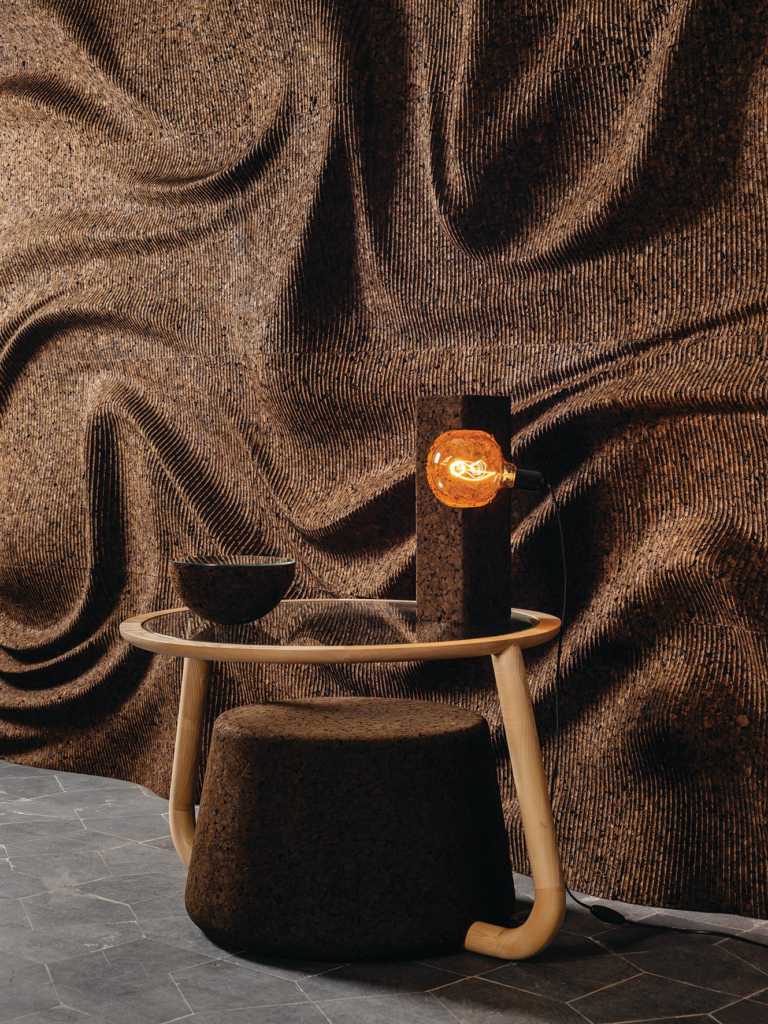
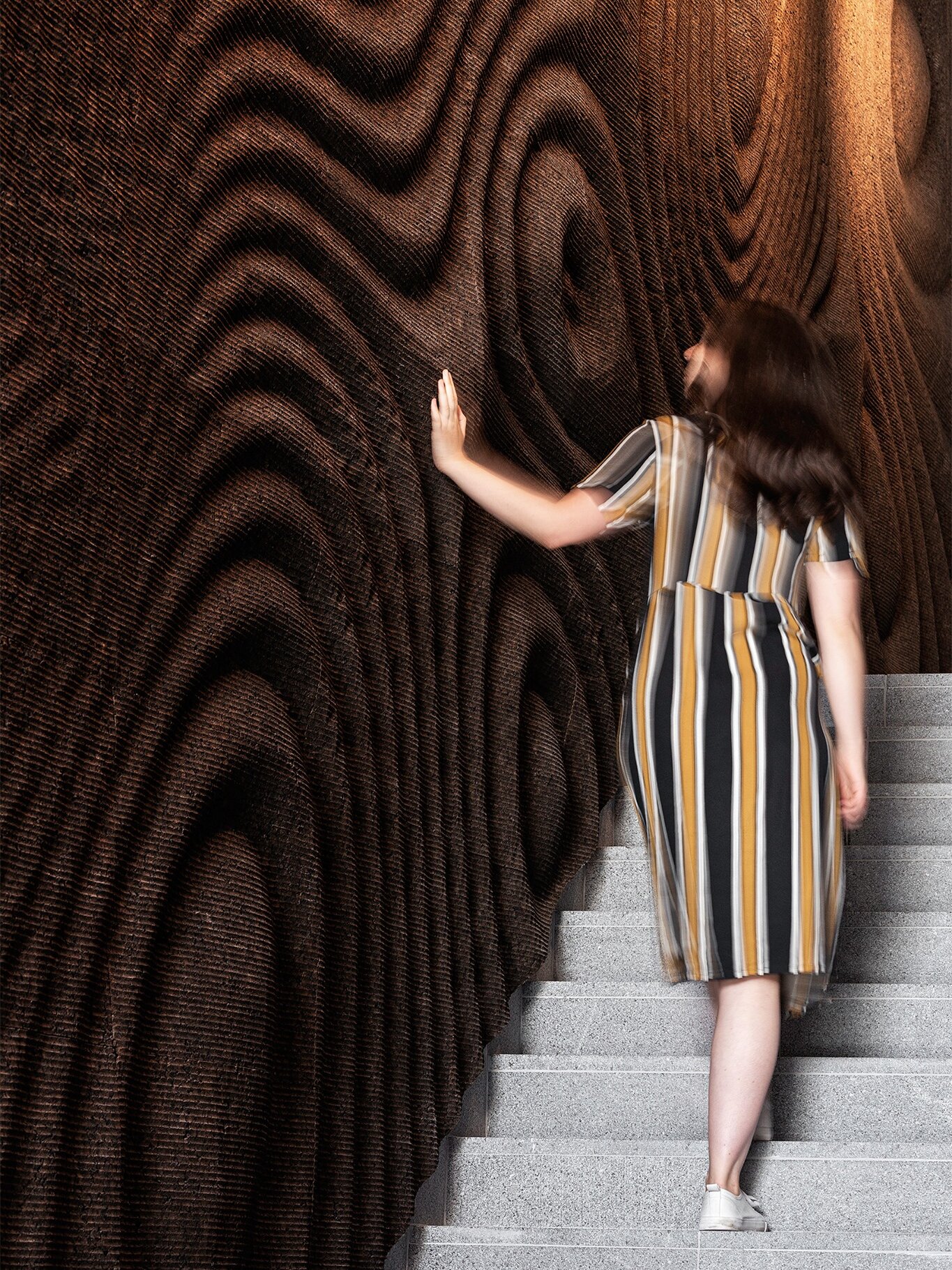
R&D (innovative materials) and design seem to be the same in your approach: is it the design that inspires R&D, or R&D that opens doors to design?
The relationship between design and R&D takes us back to the classic chicken-and-egg scenario. Which came first? It’s a cause-and-effect logic that in our modus operandi works inevitably in harmony. It’s a non-binary process; we don’t turn off one switch to turn on the other. The approach is much more “quantum,” and non-sequential; the secret lies in exploring the space in between. The grey areas are fertile grounds that enhance the sprouting of creative ideas – exploring the unknown to achieve the unexpected. This is the core of our philosophy, present not only in [SPECTROOM] but also in GENCORK – Pure experimentalism. The creative act is based on experimentation, form-finding, and trial-error principles. Form follows exploratory processes.
R&D is present at various interconnected stages of our process and doesn’t end with innovative materials; on the contrary, it influences all other areas of action: the raw matter itself (the source of the material); the transformation of that matter into a material; the materialization of a form (through software and hardware), and its materiality (meaning, what purpose does it serve, the user experience). Our vision is comprehensive and inclusive. If we can’t innovate in at least one of these points, it means we need to continue (re)searching in an even more incisive way. The classic scientific method of investigation continues to play a fundamental role in the development of our ideas. In short, we are guided by curiosity, and that is the key to the creative act, which opens the doors to innovation. “You can never learn less, you can only learn more”, said American architect and designer Buckminster Fuller.
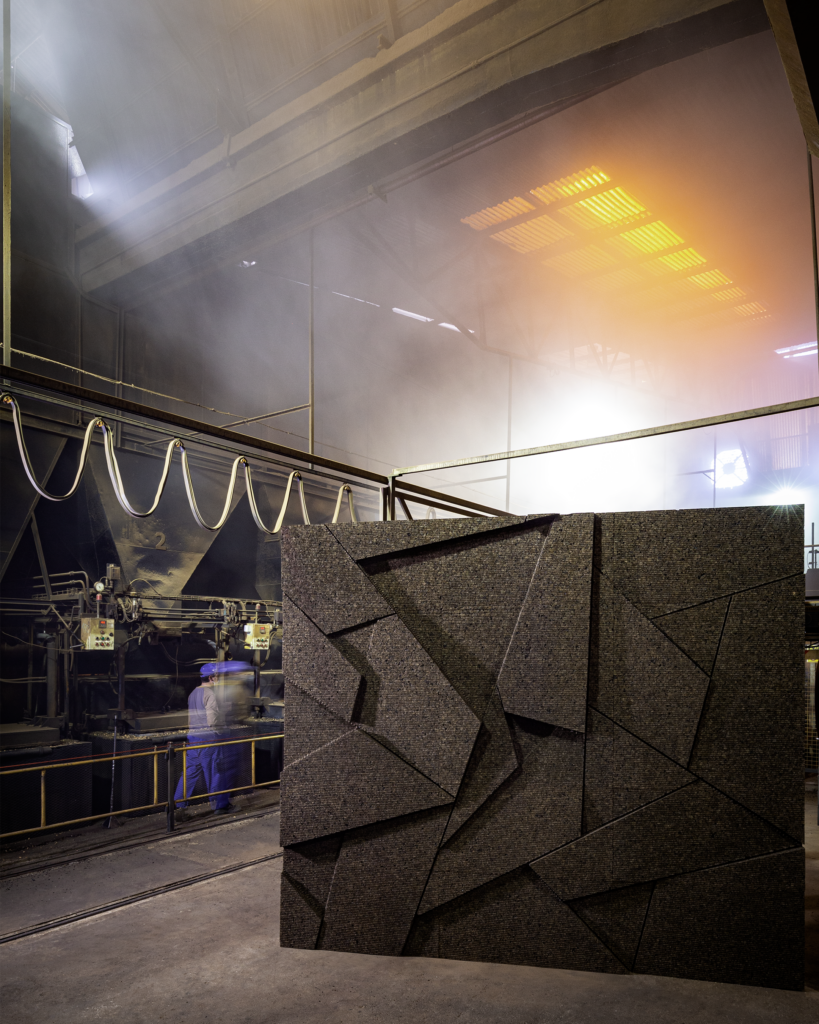
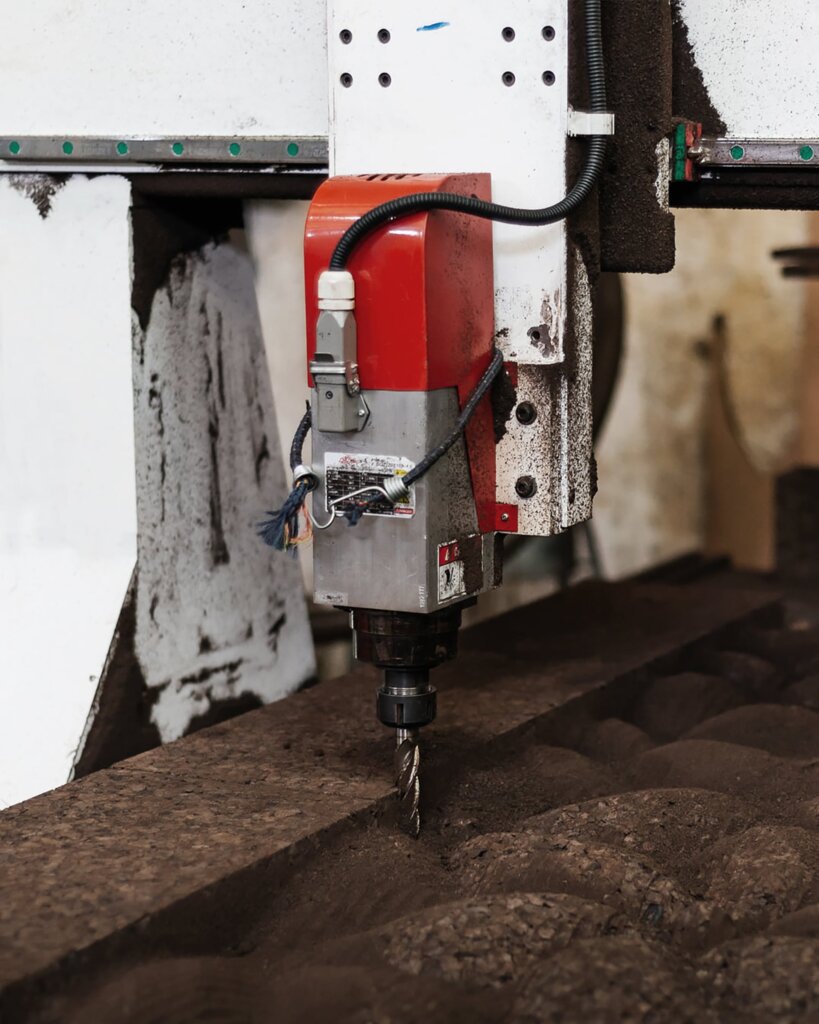
Is the future of building and finishing materials to become a decorative element in its own right? What would you like to make with cork?
I don’t believe in the concept of decoration per se, as something accessory, superfluous, and ephemeral. However, the etymology of the word “decoration” leads us to the act of adorning, beautifying, and honoring. History tells us that there is a human will, transcending styles and eras, to add value or meaning to something that is a priori more functional. It is a natural need to give a soul or identity to an element.
I could address the classical dichotomy of form and function, but the relationship between bones and skin is more visceral. For a material to be structurally solid (bone) and aesthetically appealing (skin) in its essence, a perfect combination of physical and chemical properties is required. The Vitruvian Triad, presented by Vitruvius in the 1st century BC, highlights three fundamental elements of architecture: firmitas (constructive stability), utilitas (function), and venustas (beauty). Sense and essence are crucial to create innovation in the fields of architecture and design. Buckminster Fuller also said: “You never change things by fighting the existing reality. To change something, build a new model that makes the existing model obsolete.”
In summary, new buildings should have this innovative character; thus, the materials of the future should be structurally more consistent, adapt to new functionalities, be aesthetically appealing, and, last but not least, be ecological. Cork is a super material, flexible and versatile, allowing us to engage with different areas of human creativity. The concept of “Furnitecture” (furniture + architecture) holds a prominent place in our formal research, and more recently, we are incorporating concepts of artificial intelligence (AI) into our workflow, opening an infinite spectrum of possibilities, creating a derivation of generative design more connected with nature – biomimetic.
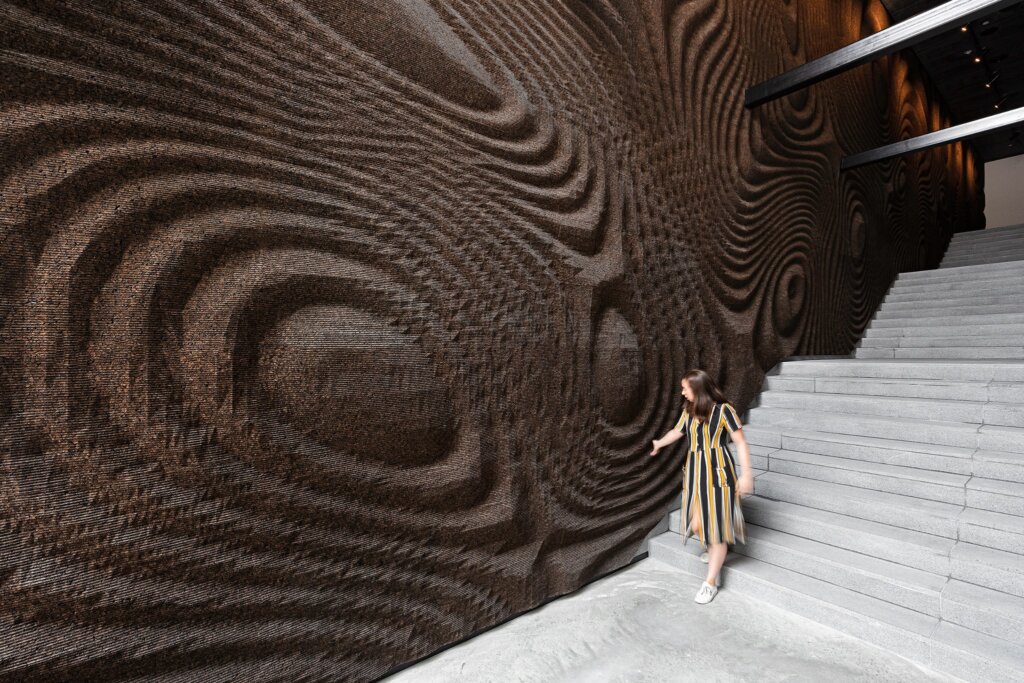
What are the benefits of cork, whether in terms of production, durability, design or mechanical properties?
The expanded black cork from Sofalca is a 100% natural product in which the bonding of the raw material granules occurs exclusively due to volumetric expansion and the exudation of natural cork resins, induced by the action of temperature transmitted through a thermal fluid (water vapor). This results in an agglomerate that does not use any glues, paints, or additives in its composition, being solely made of cork. It is a sustainably sourced material at its core. These characteristics make cork lightweight, elastic, nearly impermeable to liquids and gases, an excellent thermal and acoustic insulator, and highly resistant to fire. Cork is a super material that easily adapts to the most advanced manufacturing techniques, offering a wide range of creative solutions for designers and architects.
What do new technologies enable you to do that you couldn’t do without them? Can tech “augment” nature?
The concept of innovation with new technologies is not linear. But before addressing the specificities that define it, it is important to understand how it manifests in our creative process. Technology can have multiple variations and frameworks. However, we can highlight two main areas of our practice: Software and Hardware. Software encompasses two distinct subjects that complement each other, computation, and computerization.
In 2006, Kostas Terzidis released the book ‘Algorithmic Architecture,’ which explored the difference between these two topics. Computation is applied in the digital creative act (algorithms). These algorithms are based on mathematical, geometric, and biomimetic principles. Biomimetics is the science that allows us to understand the structure of fauna, flora, and natural phenomena, being the genesis of multiple evolutionary algorithms.
Quoting Nicholas Negroponte: “Computing is not about computers anymore. It is about living.” Computation is an essential generative process in defining our creative philosophy, it is our way of creating and sharing our ideas about the future with the world.
The use of computerization is much more functional. Computer-Aided Design – CAD is a technical tool and not necessarily disruptive, useful in solving simple problems and everyday tasks. Hardware manifests itself in our workflow through the materialization of pixels into atoms –Computer-Aided Manufacturing – CAM C , through the use of CNCs – numerical controls, in the production of generative GENCORK panels. It’s interesting to note that subtractive production processes were invented in 1970. The technology is not recent, but it can be explored according to new formal approaches. The human factor is essential in creating innovative ideas with existing technologies. However, new combinations of generative design with CAM systems, robotics, and 3D printing allow for speeding up the creative process and making the production process more powerful, in a rigorous way. In summary, technology is a powerful vehicle that translates abstract concepts into tangible forms.
However, more than just technical tools, new technologies are creative partners that assist us in developing new forms and allow us to achieve levels of complexity and beauty that the human mind could not reach without digital support. Exploring our Naturology concept we can say that technology allows us to understand and interact with nature, being the basis for its better understanding and the consequent development of our mind and skills.
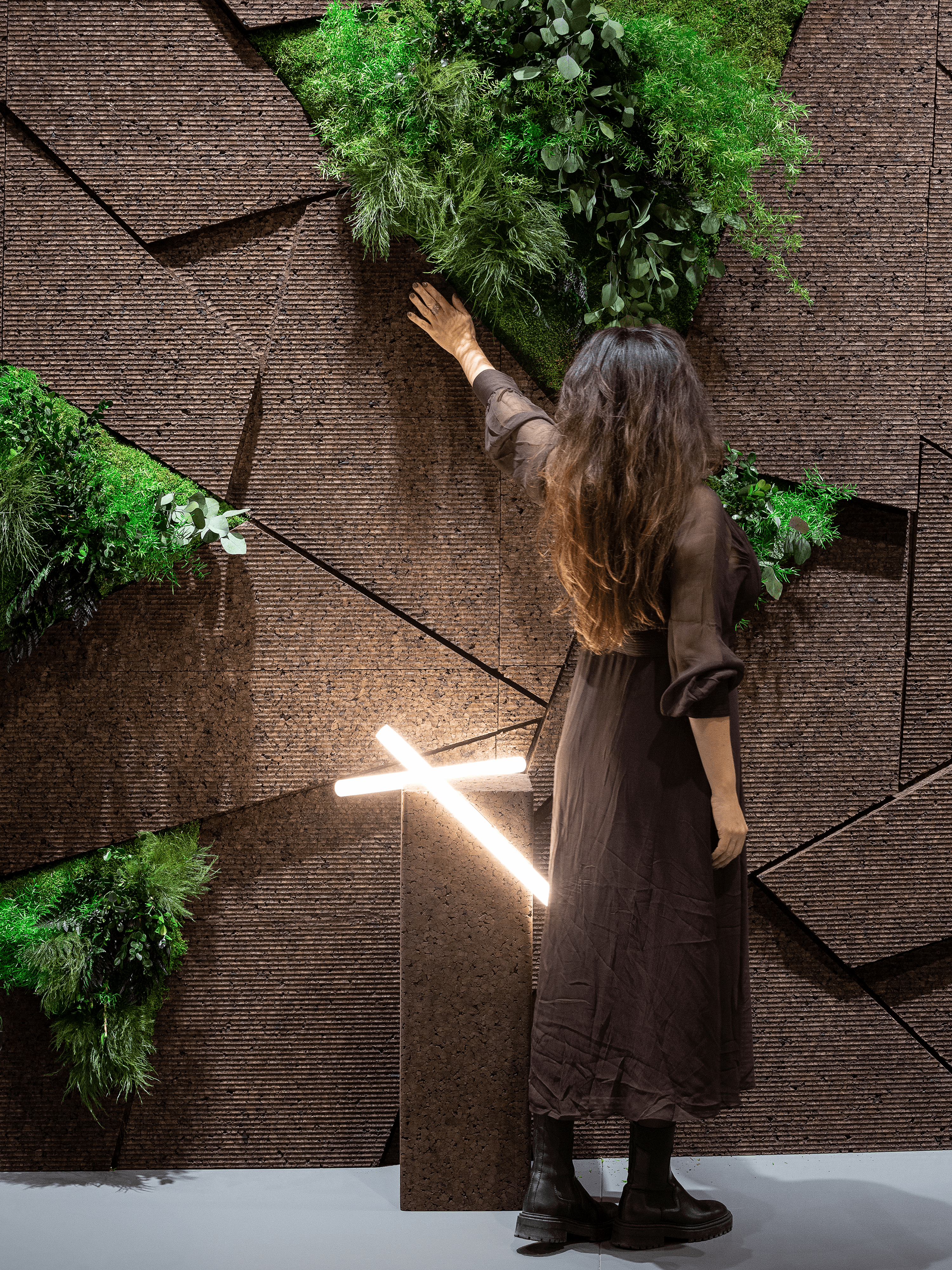
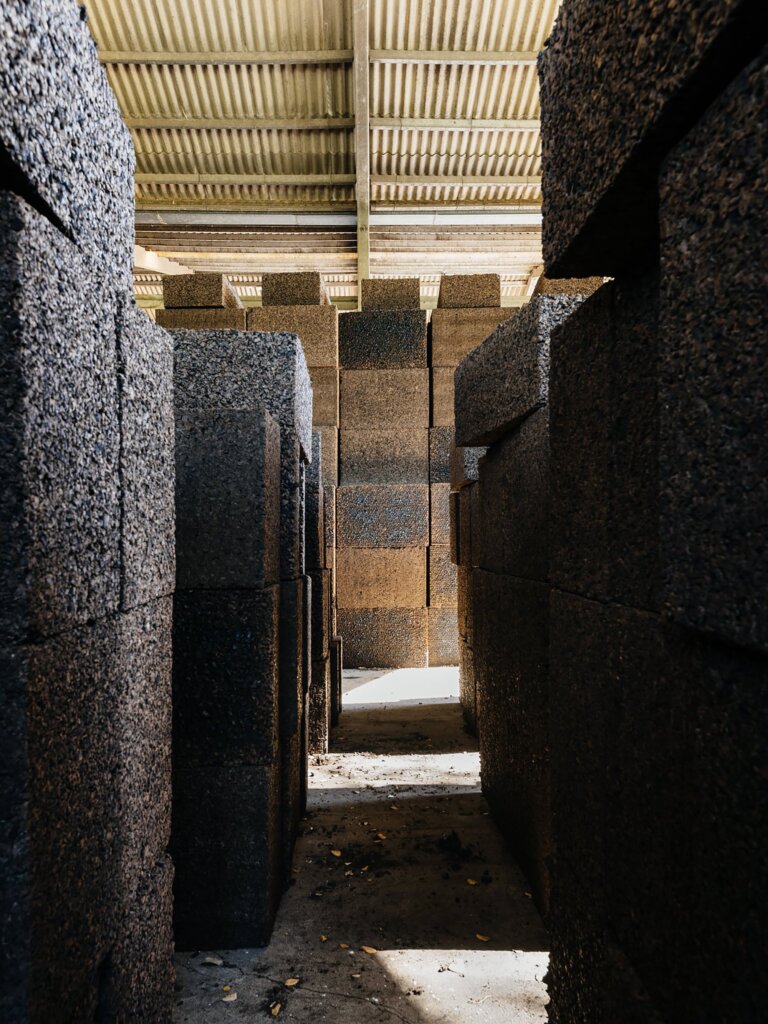
Thank you to [SPECTROOM] and GENCORK for their participation in the INSPIRE ME! forum presented from January 18 to 22 at the Maison&Objet exhibition. The prospective teams and designers from Peclers Paris showcased possible applications in the hospitality sector for the reconciliation between science and nature.
The forum also welcomed artists such as Roxi Basa, Mâche Mâché, and Infrastructure Studio.




